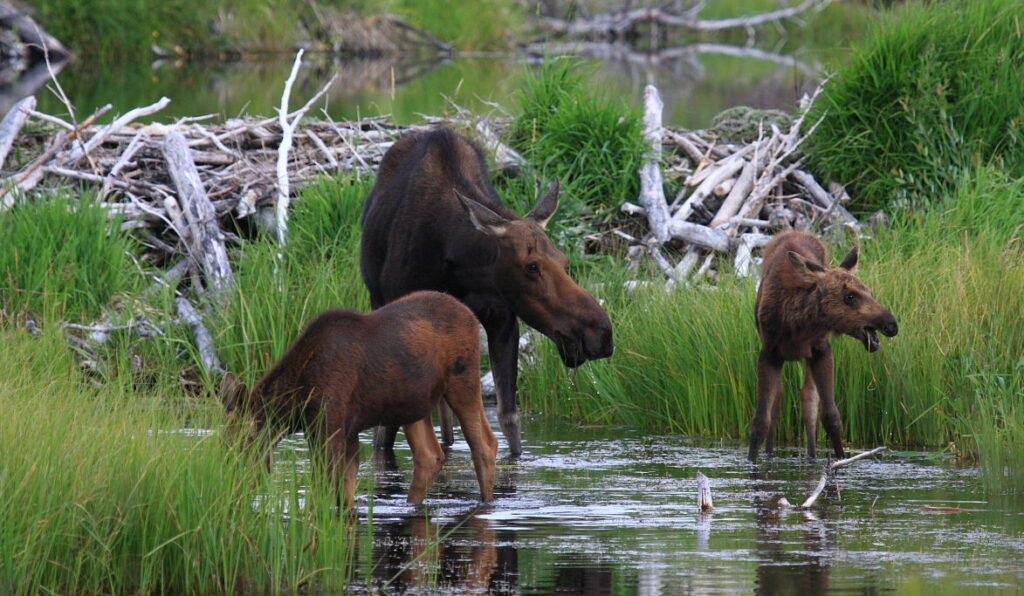Many moose calves celebrated their first birthdays earlier this summer. And if you are a mama moose in the Greater Yellowstone Ecosystem that has raised a calf to its first birthday, you’re pretty darn special. First, you and your calf had to survive a brutally snowy winter with temperatures that dip below -30 degrees Fahrenheit. Then add in the danger of the full complement of hungry North American large predators: 600 lb boar grizzlies, the occasional passing cougar, and a nearby pack of wolves. You can’t rely on the protection of the herd as elk and bison do, or on the safety of cliffs as the bighorn sheep do. On the developed edges of the ecosystem, there is the added danger of car strikes and harassment by off-leash dogs. But through her wisdom and cunning (for a moose), plus a little luck, a mother moose can lead her calf through the perils of the winter and emerge to enjoy the fresh willow growth of spring.

Now let’s make the narrative more complex because moose are fairly new arrivals to the Greater Yellowstone Ecosystem. But unlike mountain goats, which were deliberately introduced to the area, moose wandered down on their own from central Idaho and northern Montana around the turn of the century. What had been keeping them out in the 1700 and 1800s? Predators, forest fire, parasite abundance, competition with elk or other species, snow depth, the ratio of wetlands to forest? What changed around the late 1800s that allowed moose to colonize this landscape? It seems too much of a coincidence that moose arrived at the same time settlers began to eradicate predators, suppress forest fires, and irrigate the land. Like many complex ecological subjects, there is probably no direct cause-and-effect but rather a complex web of interactions that allowed moose to expand their population.
So how should we humans manage and protect moose populations in the area? In addition to the small economic value generated by the limited number of moose hunters, many of the visitors to the ecosystem enjoy seeking, watching, and photographing moose. Locals usually enjoy seeing moose in their neighborhoods and are distressed by the recent decline in the moose population. Wolves are often the target of blame, but climate change, increased development, and an increase in parasites are major culprits.

In Jackson Hole, the estimated size of the moose population was zero in the 1800s, a small handful in the early 1900s, and over 1,000 by the 1970s and 80s. They have been declining since then, though the latest population count has remained stable over the last few years at 400-500. Complex questions flow from this trend. Should we be trying to increase numbers to maximize moose numbers? Do we actively ignore their decline because they are not longstanding residents within the local ecosystem? Or do we simply watch nature take its course? Questions of this nature evade easy answers. But I think we can all agree that a mama moose doesn’t expend energy worrying about moose population dynamics. She’s too busy keeping herself and her calf safe and nourished. So the next time you see a moose in Yellowstone or Grand Teton National Parks, remember that she’s earned bragging rights as one of the toughest wildlife mothers in the world.



